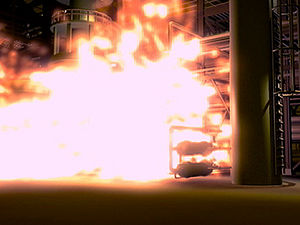Category:Explosion Safety
Within the industry a large number of explosive and flammable substances are used. Knowledge about the dangers of explosions decreases the safety risks for the direct environment, the workers and the companies. The gas explosion risk in a given situation depends on a combination of probability and effects of the explosion, directly related to explosion sensitivity and explosion severity, respectively. In process optimization and quality increase, safety plays an important role. When performing risk assessments for chemical processes, the probability and consequences of explosions should be known. This is also important in determining the best counter-measures in explosion prevention and protection.
As of July 2003, organizations in EU must follow the directives to protect employees from explosion risk in areas with an explosive atmosphere. There are two ATEX directives (one for the manufacturer and one for the user of the equipment):
- the ATEX 95 equipment directive 94/9/EC, Equipment and protective systems intended for use in potentially explosive atmospheres.
- the ATEX 137 workplace directive 99/92/EC, Minimum requirements for improving the safety and health protection of workers potentially at risk from explosive atmospheres.
Employers must classify areas where hazardous explosive atmospheres may occur into zones. The classification given to a particular zone, and its size and location, depends on the likelihood of an explosive atmosphere occurring and its persistence if it does.
Pages in category "Explosion Safety"
The following 45 pages are in this category, out of 45 total.
